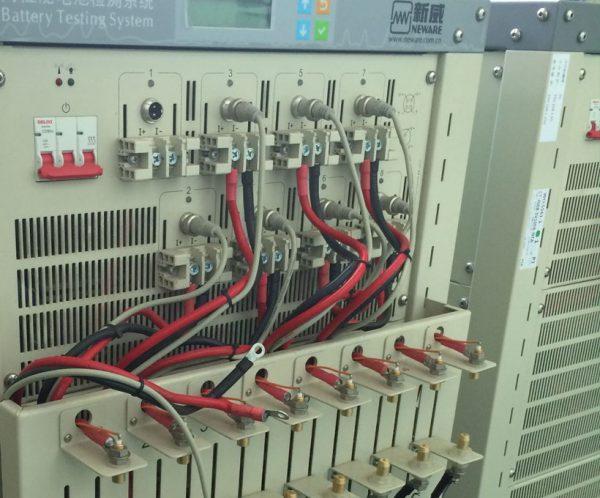As the global demand for advanced energy storage solutions rises, the battery testing equipment market has become increasingly diverse, offering a range of options to meet the needs of various industries. Battery testing equipment plays a crucial role in evaluating battery performance, safety, and longevity, ensuring that batteries used in electric vehicles (EVs), renewable energy storage systems, and consumer electronics operate optimally. In this article, we will explore the different types of battery testing equipment available and their applications across industries.
1. Cell and Module Testing Equipment
Battery cells and modules are the building blocks of most energy storage systems, whether in electric vehicles or large-scale grid storage applications. Testing equipment designed for cells and modules is essential for evaluating individual battery units before they are integrated into larger systems. These testing solutions typically measure parameters such as voltage, capacity, internal resistance, and temperature during charge and discharge cycles. This ensures that each cell meets performance standards and safety requirements before it is assembled into a battery pack.
Cell and module testing equipment can be used for both research and development purposes and quality control in manufacturing. It helps to identify potential defects or weaknesses in individual cells, such as short-circuiting, thermal runaway, or capacity loss, before they cause problems in larger systems.
2. Pack Testing Equipment
Battery pack testing equipment is designed for evaluating fully assembled battery packs, which are commonly used in electric vehicles and large-scale energy storage systems. A battery pack typically consists of multiple cells or modules arranged in series or parallel to provide the required voltage and capacity. Testing equipment for packs assesses the performance and safety of these larger systems under realistic operating conditions, including tests for charge/discharge cycles, voltage imbalance, thermal performance, and capacity degradation over time.
Pack testing equipment is crucial for ensuring that batteries in electric vehicles can withstand the stresses of daily use and perform efficiently over their expected lifespan. Similarly, it is used to verify the reliability of large battery storage systems used in renewable energy applications, ensuring they can store and release power effectively.
3. High-Voltage Testing Equipment
With the rise of electric vehicles and grid-scale energy storage, high-voltage battery systems are becoming more common. Testing equipment designed for high-voltage batteries ensures that these systems can operate safely under elevated electrical loads. High-voltage battery testing equipment typically includes safety features such as insulation resistance measurement, thermal monitoring, and overcurrent protection to prevent accidents during testing.
In addition to EVs and large-scale energy storage systems, high-voltage testing equipment is also used in applications like industrial batteries, military systems, and aerospace technologies. These solutions help assess battery performance under high stress, ensuring safety, efficiency, and reliability in demanding environments.
4. Environmental and Durability Testing Equipment
Environmental and durability testing equipment is used to simulate real-world conditions and assess the performance of batteries in extreme environments. These tests evaluate how batteries perform under various conditions, such as high or low temperatures, humidity, vibrations, and shocks. Durability testing equipment helps manufacturers determine the lifespan of batteries by simulating long-term usage, including deep cycling, charge retention, and capacity degradation over time.
This type of testing is crucial for ensuring that batteries used in electric vehicles, renewable energy storage, and consumer electronics can operate reliably under different environmental conditions, from freezing temperatures to hot climates.
5. Smart Testing Solutions and IoT Integration
The integration of smart technologies like the Internet of Things (IoT) and Artificial Intelligence (AI) has led to the development of next-generation battery testing equipment. IoT-enabled testers allow for real-time monitoring and remote diagnostics, providing manufacturers with valuable data about battery performance, health, and longevity. Smart testing solutions can optimize the testing process by automating routine tasks, enhancing accuracy, and reducing the risk of human error.
AI and machine learning algorithms are increasingly used to analyze test data, predict battery behavior, and identify potential issues before they arise. These intelligent solutions enable more precise testing and contribute to the faster development of next-generation battery technologies.
Conclusion
The battery testing equipment market offers a wide array of options, catering to various industries and applications. From cell and module testing to high-voltage testing and environmental simulations, these testing solutions are critical for ensuring the safety, performance, and longevity of batteries in electric vehicles, energy storage systems, and consumer electronics. As battery technologies continue to evolve, so too will the testing equipment designed to support them, incorporating smarter, more efficient solutions to meet the demands of a rapidly growing industry.



